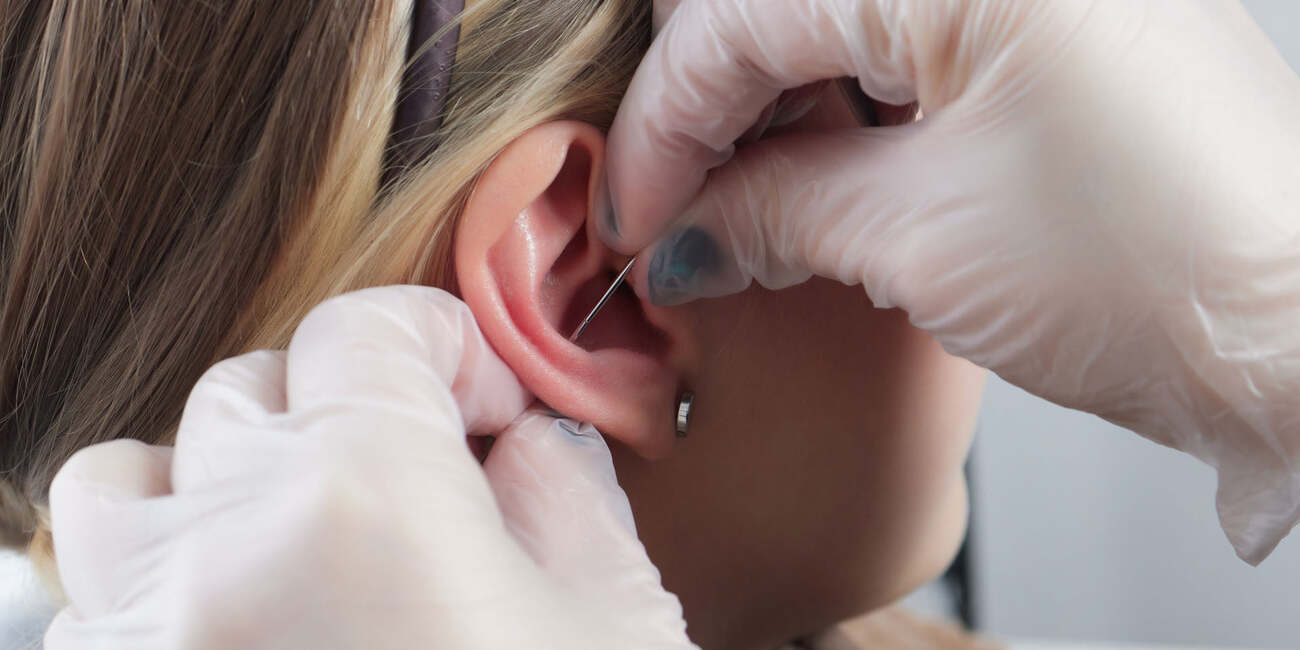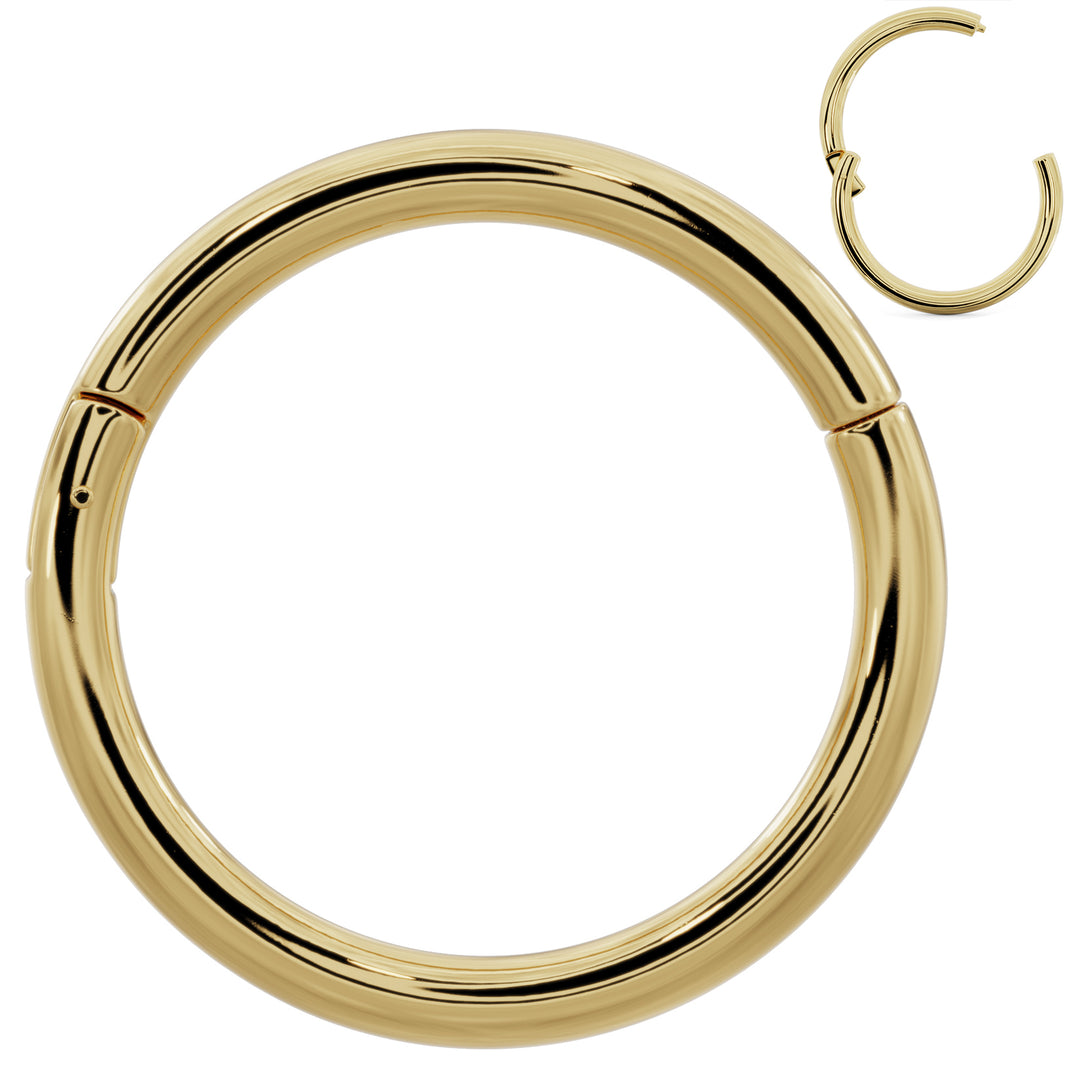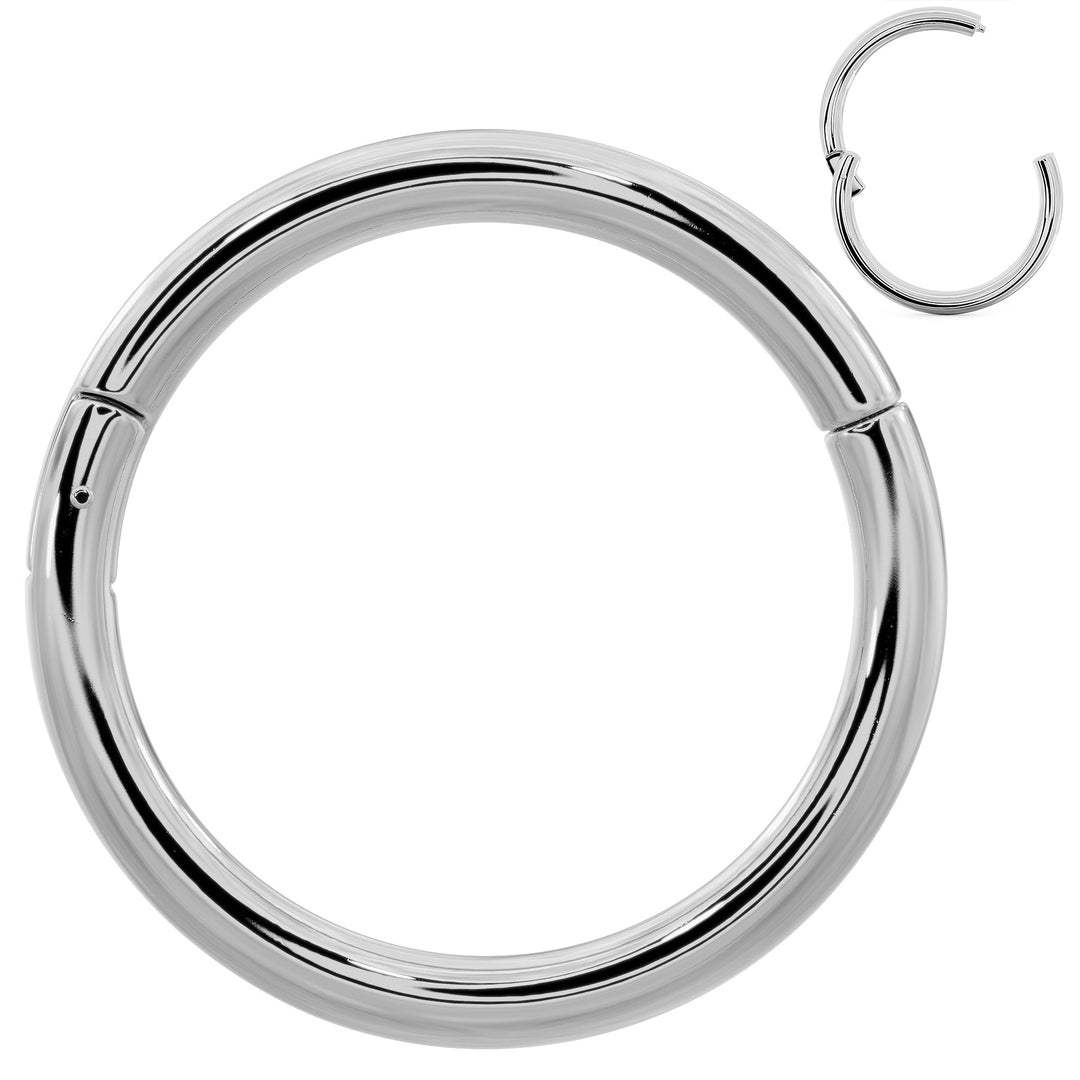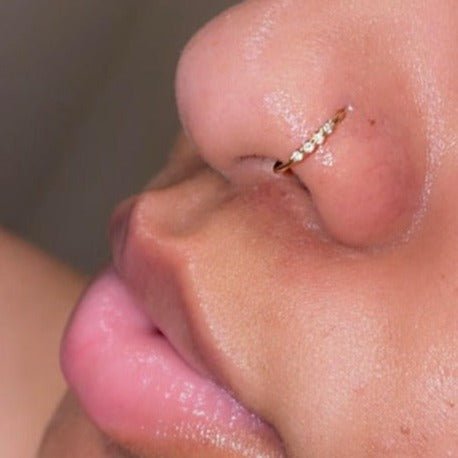The Conch Piercing: Everything You Need To Know


The conch piercing (pronounced “konk”) takes place in the middle portion of your ear cartilage, making it probably the most customizable body piercing. It’s so called because that area of the cartilage resembles a conch shell.
If you choose to get this piercing, you can either choose the inner conch piercing or the outer conch piercing. The inner conch is located in the lower cartilage and is usually decorated with a cartilage stud. The outer conch sits in the upper cartilage and often sports a large hoop around the edge of the ear.
In terms of cartilage piercings, the conch piercing is fairly standard, so if you’ve dealt with cartilage piercing aftercare practices before, you should already know what to expect. However, the location of the conch means that there’s a lot of room when it comes to piercing placement, so you’ll want to consider a few things before you get this piercing.
Here’s all that you need to know before getting a conch piercing.
How Much Does The Conch Piercing Hurt?
The conch piercing doesn’t hurt any more than any other cartilage piercings. In general, cartilage piercings fall about halfway on the pain scale, and the conch is the same. It will hurt more than a lobe piercing, but it shouldn’t be anything that most people can’t handle.
Typically, the conch is pierced with a 14G needle. You can go larger than that, but if you do, you might want to consider a dermal punch rather than a needle. The dermal punch will give you the larger gauge, but it actually removes a portion of cartilage rather than just piercing the skin, so it's a more invasive procedure. Additionally, a dermal punch piercing won't heal on its own, and many states have laws against using dermal punches for piercing purposes, so it's not recommended.
If you want a larger gauge but find the dermal punch intimidating, it is possible to stretch the cartilage, but it can be difficult. Also, keep in mind that even cartilage piercings with smaller gauges are difficult to heal, and a larger gauge will require surgery if you someday choose to get rid of your conch piercing. Consider this piercing for a long time before visiting your piercer, since it will be more permanent than other piercing options.
Conch Piercing Healing Process
The conch piercing will heal about the same as any other cartilage piercing. Cartilage takes longer to heal than other fleshier areas, and it greatly varies from person to person. The conch will take anywhere from 3 months to one year to fully heal, so be sure to consult a piercer before stopping aftercare practices.
Aftercare Rules
Beyond standard aftercare practices, cartilage has less blood flow than other areas of the body, so it will heal differently than your lip or earlobe. Here are some things to keep in mind when healing any cartilage piercing, including the conch.
Be careful with the things you put on your ears. Headphones, hats, and even your hair exposes your piercing to harmful bacteria that can cause infection. In the first days after receiving your piercing, make sure that you keep your piercing away from foreign objects. Keep your hair in a ponytail. Opt for headphones that go completely over your ear and don’t put pressure on your new conch piercing. Stay away from hats. Give your piercing a fighting chance and let it heal without disruption.
Keep pressure off the jewelry. Moving the jewelry can cause trauma to the skin around the piercing site, leading to complications like scarring and piercing bumps. Don’t twist or move the jewelry during healing. This rule also applies when you’re sleeping. Try not to sleep on the jewelry. If you sleep on your side, it might be a good idea to get your conch piercing one side at a time so that you don’t disrupt your sleep schedule.
Keep clean and dry. Cartilage piercings, in particular, are susceptible to bumps and other healing complications. Therefore, don’t get lazy with your aftercare practices. Keep your ear clean. Make sure that the piercing area is free from ear wax and dead skin. Use clean sheets and pillowcases every night. The conch piercing is adorable, but it doesn’t look great when surrounded by bumps and scars. Help your piercing heal happily by keeping it clean and dry.
Conch Piercing Jewelry Styles


As mentioned previously, the conch consists of two styles: the inner conch and the outer conch. While conch location will depend on your cartilage anatomy, you also need to decide your preferred jewelry style before choosing conch location.
Large hoops are incredibly popular in the outer conch. The location of the outer conch, located in the upper conch cartilage, is close enough to the rim of the ear to wrap a hoop around the ear. You can choose seamless hoop styles for a slick look, or try segment or clicker hoops. The latter are super easy to use, and the hinged style works well with larger hoop types. It is possible to wear a stud in the outer conch, but the hoop style (also known as an orbital conch piercing) seems to be the most popular.
In the inner conch, you’ll want to opt for a cartilage stud. You can choose a stud with a flat disc back or ball backing, whichever style you prefer. The cartilage stud looks great with a solo conch piercing or as an addition to your cartilage cluster.
Why Shouldn’t I Get A Conch Piercing?
Since the conch is such a large area to work with, rarely will your ear anatomy bar you from getting this piercing. However, your anatomy will dictate the location. Be extra careful when your piercer marks the piercing location to make sure it’s where you want it; even a millimeter can completely change the look of your conch piercing.
The conch takes a long time to heal. This makes it a more permanent piercing than other piercing options. Therefore, it’s not a great piercing to get on a whim; there are many things to consider before making the decision.
If you’re genetically predisposed to scarring, stay away from cartilage piercings in general. Hypertrophic scarring is very common in cartilage piercings, and if you suffer from keloids (a rare genetic condition), they're likely to appear in cartilage piercings.
Cartilage piercings require attentive aftercare. If you’re one to be lazy with your practices, then this might not be the piercing for you.
FreshTrends Tip
While healing, swap your ear buds for over-the-ear headphones to avoid pain and irritation.
How Much Does Conch Piercing Cost?
Conch piercings cost anywhere between $30 and $90. With any piercing, you want to opt for experience over cost, but it’s even more important with a cartilage piercing that’s susceptible to scarring. Start your conch on the right foot and opt for a great piercer.
Never choose a piercer that uses a piercing gun. Chances are, they don’t have a ton of experience, and the piercing gun can cause damage to your ear.
Conch Piercing Variations
Besides choosing whether you want to pierce your inner or outer conch, there are other piercing variations to consider as well.
The double- or triple-conch allows you to get a little wild with your middle ear cartilage. You can stack your piercings on top of each other or horizontally. This style looks amazing paired with a cartilage party. It’s a good idea to decide whether or not you’d like multiple conch piercings before you get your first conch so that you can plan how your conch cluster will turn out. You can get more than one at once, but to simplify aftercare, it’s best to get them one at a time.










